

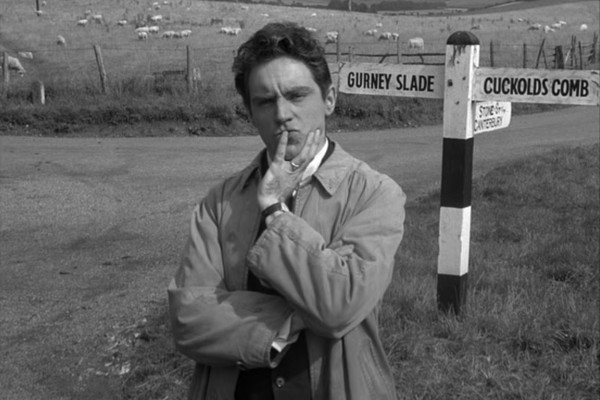
The six part series aired from October-November 1960, with the whole series available on DVD via the online Anorak Zone Store. Join me as I rank all six episodes from worst to best...
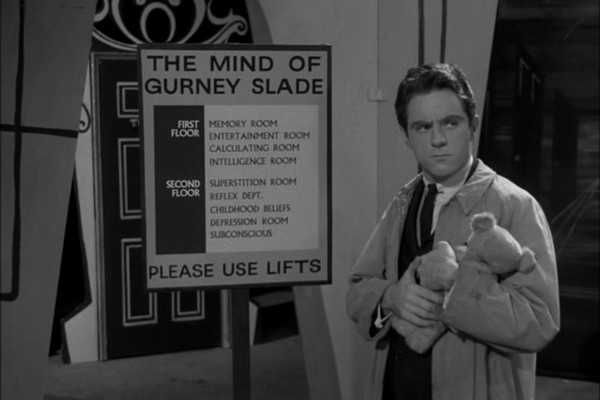
"It's wonderful to be out of my mind again."
The phrase "worst to best" doesn't really apply with Gurney Slade, as there's not really a "worst" episode in the run. This one sees the programme converted into a mock-ironic children's programme, with the show's tradition of Newley miming a piano to start off the catchy theme tune (something absent altogether in the third episode) here begun by one of the kids. The final three episodes of Gurney Slade are pointedly different to the first half of the series, in that they're all shot in a studio, and are all overtly humorous in a way the first three aren't. Characters like Bernie Winters as "Albert" are recognisable attempts to make an audience smile, in a way that the quirky, offbeat and meandering narratives of the first three don't aspire to.
While still some of the more unique television episodes covered on this site, and even more metatextual, the last three tap more into the recognisable television lexicon, rather than the truly offbeat tales of where it all began. The episode concludes with a trip inside Gurney Slade's mind... while concepts like the "Depression Room" might be played more broadly for laughs than they would be today, you've got to love a series that has the star watch himself performing his top three hit of that year and musing "Funny... I always had the impression that I sang better than that."
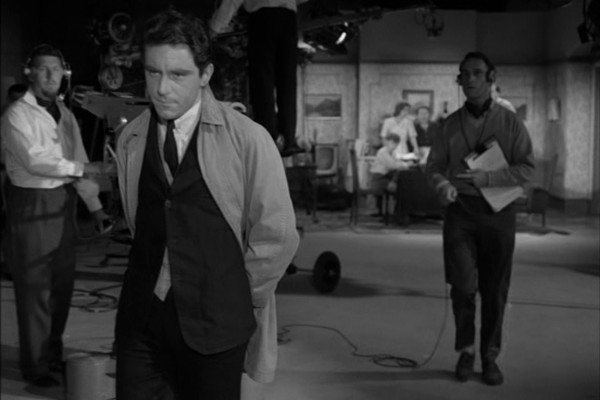
"The golden years of British entertainment! So much for Shakespeare and Sophocles."
The first episode of the series was the only one to get a repeat outside of the 60s, appearing in Channel 4's 1992 series Television Heaven. The opening four minutes, where Gurney walks off the sitcom set and into real life are excellent, as are the final moments where he realises he can't escape from the cameras. Yet what takes place in between is less substantial than what came after, the episode as a whole being light in content. Although over 12 million tuned in to see a successful singer and film star appear in his own television comedy, almost 4 million deserted the show the following week, causing ITV to pull it from the prime time schedule. As an opening episode of Gurney Slade, then it's a good one, albeit not a great one; an episode that requires the suggestion to "stick with it".
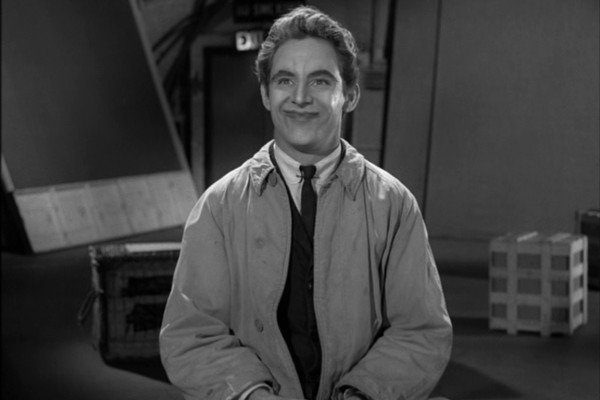
"They'll all live again, but for me, this is the finish."
In an age where it's almost impossible to find a television programme that doesn't practise self-reflexivity, it's important to remember that Gurney Slade aired over half a century ago. The influence from Six Characters in Search of an Author is felt here, though is met with charming reactions from the characters Slade has created throughout the series. Perhaps the most rewarding is from Anneke Wills who, upon learning that he'd imagined her as an "18 or 19" year-old girl, decides that "I think you're a little too old for me." The final ending is a little saddening, as Gurney expresses his wish to do a second series, only to turn into a lifeless ventriloquist's dummy under the gaze of the real Anthony Newley.
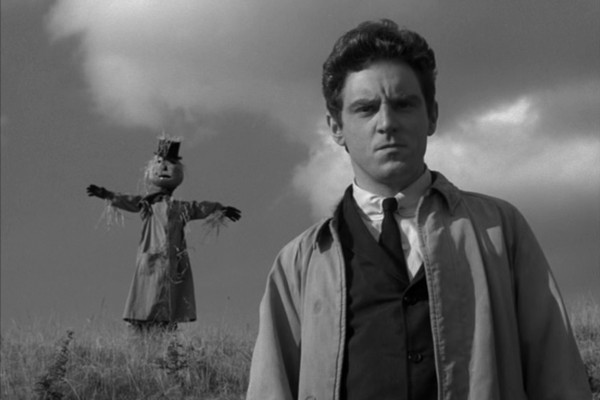
"Well, there's a job vacant... if you want it."
While plaudits directed towards the series invariably include "ahead of its time", it must also be acknowledged that it was of its time, too. There's no show on television today that would open with a near four-minute monologue about ants, the star looking idly through grass as he delivers it. Whether this is a good or bad thing is open to personal taste, and Gurney Slade isn't a series that prides itself on excess incident; many of the episodes are sparse in terms of pure content, and episode three is the gentlest of them all.
Beautifully directed by Newley and Alan Tarrant, the film stock here is so well preserved that the DVD looks as if it was made yesterday, Newley wandering through the countryside talking to animals like some kind of existential Johnny Morris. Highlights here include Newley performing a duet of Greensleeves with a scarecrow, the use of ants to make subtle commentaries on the state of post-war Britain and, most macabre of all, the farmer's wife and hired hand who plot to murder the farmer, almost unnoticed by Newley until it's too late. It's this subversive, sinister undercurrent that makes the third episode rank so high in this list.
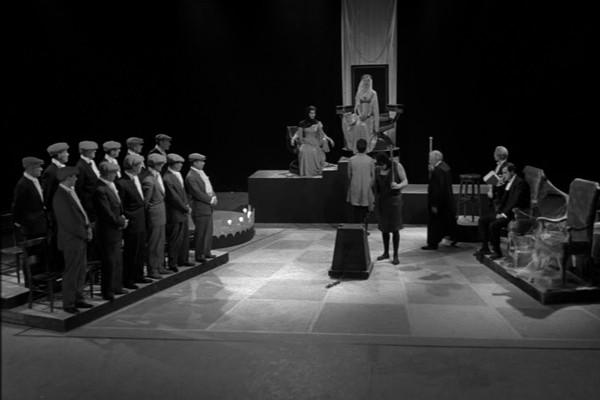
"Not funny... clever."
The episode where the series stops and deconstructs itself, Gurney placed on trial for making a programme and "They didn't think it was very funny". What makes this episode so astonishing (along with the promo commercials for the series) is that it accurately predicts the audience response to the programme in which they appear. It's almost impossible to believe that the makers of the series were so prescient they were able to project the bewilderment and resentment of the viewing public before the show even aired.
At this point in the series, it had already been pushed off prime time Saturday night and thrown into a late night slot. Curiosity over the programme saw a repeat in 1963, but it's one that's generally fallen into obscurity, a series that wasn't appreciated by a mainstream audience in a time when niche programming schedules didn't exist. Although critically acclaimed and influential, it's widely forgotten, and episodes like this one uncannily depict why.
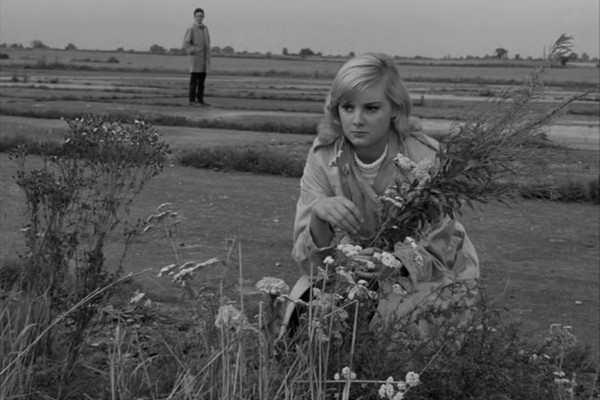
"Personally I think most people marry the first one that happens to be around."
It's tempting to read too strongly into ficticious programmes and assume that the makers are expressing their own fears on screen, and it must be acknowledged that, while Gurney Slade was Newley's idea, Dick Hills and Sid Green were the credited writers. However, if you were going to psychoanalyse an episode of Gurney Slade, this would be the one. The first episode to feature Anneke Wills (best known as Polly from Doctor Who, and credited here as Annika), Newley began an affair with her after she appeared in the programme, moving in with her while still married to his first of four wives. It's unlikely to be a coincidence that 'Gurney Slade' wears a band on his left ring finger throughout the series, which is transferred to his little finger for just this episode.
There's much here to support claims Newley had a large part to play in the creation of the Slade character and the series: from the gravestone to lost love, to Gurney wandering the streets, encouraging a man to leave his wife and then taking away his three children. Events lead to an almost sinister conclusion, as a fairy grants Gurney a wish... a wish that turns out to be a deserted wasteland full of dismembered limbs and body parts of female shop dummies, Gurney lamenting that they're not "live ones". He encourages the children to assemble their perfect mother from the parts, before it comes to life and takes the children back. One slight detraction of the programme is the lack of continuity between shots. Look at the scene where Newley meets the fairy in the woods, one hand raised up as he speaks to the fairy, both hands on the pram for the reverse shots. It's a small but notable distraction in an otherwise well-made series.